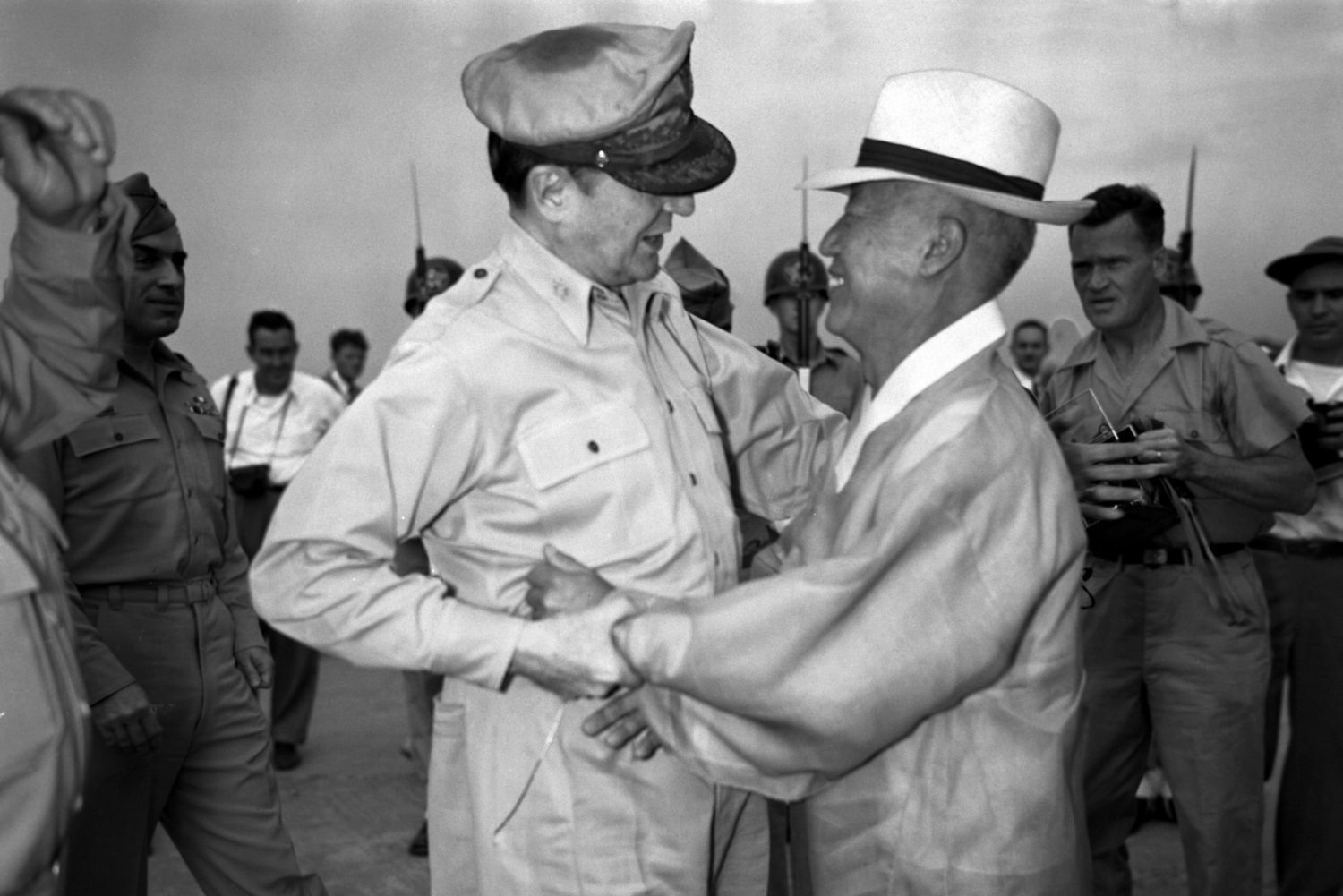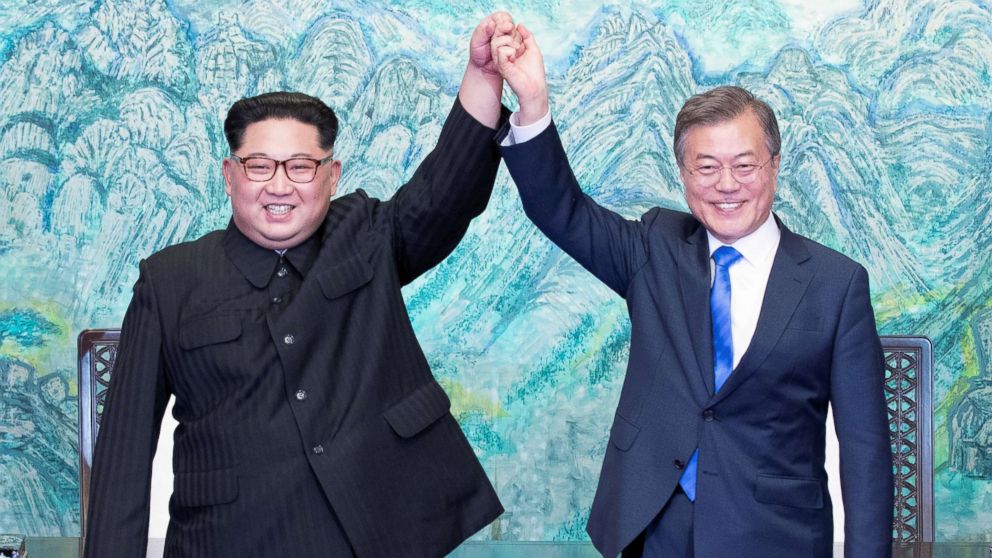The past year of 2017 has been one of great change, tension and uncertainty on the Korean Peninsula. The inauguration of a new American President – one uninterested in diplomacy – and the election of a new South Korean President occurred in the same year as escalating DPRK behavior. We have seen an atomic test, missiles flying over neighboring countries, miniaturized warheads and successful demonstrations of ICBM capacity – putting continental United States within reach. The year 2017 also included the deployment and installation of the THAAD system in South Korea, setting off a minor diplomacy crisis between ROK and China, as well as increasingly vocal Russian involvement in the Korean peninsular crisis. We are now witnessing the United States’ build up of contingency plans and perhaps offensive plans if current talks during the 2018 olympics fail.
But 2017 was important also because of it’s historic significance, it was the 70th anniversary of another monumental year in Korean history.
On November 14th, 1947, after less than two months of deliberation, a nascent UN voted to hold elections south of the 38th parallel, setting into motion an election that would politically and symbolically separate North and South Korea. It would be an election to lead a divided, basically non-existent nation – one that would leave 100 National Assembly seats open for Northern representatives – an exercise in daydreaming. Soviets, already boycotting the UN over denying China’s seat, and in opposition to the questionable election, refused to recognize the results of the UN body and the UN Security Council.
It was a moment that would eventually drive a wedge between the already divided territories. The two sides would never be able to overcome disagreement as to the legitimacy of the 48’ elections that brought Syngman Rhee to power, and whether new national elections should or could be held if North and South were to put down arms. President Rhee and the Americans refused proposals to hold new national elections upon reunification for fear that Rhee might lose to the Left. It was also a moment that helped seal the contentious tone of Soviet-UN relations for the duration of the Cold War, and Soviet’s increasing withdrawal from and opposition to “Western” powers.
Why concern ourselves with events that occurred seven decades ago? Firstly, the exact same actors from 1947 – DPRK, ROK, China, Russia, the United States, and Japan – are still the principal characters of the Korean peninsula saga, a testament to the continuing international nature of this conflict. The question of whether we’ve come any closer to a resolution must take stock of the initial cause of conflict, a central tenet of reconciliation and transitional justice theory. The more a solution to a conflict addresses the deep roots of the central issues, the more stable and long-term will be the resolution.
By September 1947, the Korean Peninsula had been under a divided trusteeship for two full years – a heavy-handed US military occupation under the insensitive command of General John R. Hodge below the 38th parallel, and the Soviet backed North Korean Communist Party under Kim Il Sung north of the 38th. During this two-year period, the opposing policies of the trustee governments and the separate development of the two pseudo-states only worked to widen the gap and build walls that would be hard to scale.
As William Stueck details in The Korean War, Soviets restricted economic ties between the North and South as well as aided in the consolidation of power under Kim by purging and isolating non-communists in the North. General Hodge, looking for expedient though downright ignorant methods of asserting control, relied on Japanese colonial structures, bureaucrats and Japanese sympathizers on the Korean political right. Hodge’s decision to maintain deeply resented colonial institutions after a long-awaited “liberation” from Japan was a prime example of the ignorance pervading Washington about the country they were occupying. It also attests to the US’ tactless desire to stamp out the once-dominant leftist politics south of the parallel.
It is a sad fact of history how wrongheaded much of the United States and Rhee’s initial suspicion of the “Left” were; the view of the Left was monolithic and actually informed by biased Japanese colonial intelligence. For many Koreans at the time, being a “communist” meant being anti-Japanese more so than an adherent of Marxist political theory. Many of the Koreans labeled “communist” were actually given the label by Japanese colonialists who categorized any-and-all colonial resistance “communist.” These labels are still used by historians today, despite how little some of these “communists” knew about Marxist doctrine.
After the Japanese retreat from the peninsula, there were high levels of political participation and community organization. But it comes as no surprise that native attempts to build politically diverse coalitions and institutions before the arrival of US forces – such as the Korean People’s Republic (KPR) based in Seoul – were given little consideration as viable inheritors of political power despite being the best chance at unification and national coalition building. The KPR was organized and run by members of the political “Left” that were well respected and had gained stature running successful community and grassroots organizations throughout the country. Left leaders like Park Hon-yong and Yo Un-hyong, the main men behind the KPR, had several times attempted to build a broader, more politically diverse movement for Korean elections and interim government. If one looks at the list of leaders of the new Republic, it was a fair mixture of politicians coming from the right and left. Syngman Rhee, an exiled resistance fighter on the right end of the spectrum, who had spent many years advocating in the United States, was chosen to be president of the KPR; it was a real extension of the olive branch.
When integration, coalition building and self-determination should have been the goals of Korean politics under the United States’ trusteeship – the US Military Government under General Hodge dashed such hopes. Hodge was chosen merely because his command was geographically closest to the peninsula. Hodge, however, was not trained in politics or civilian command, and made many blunders – including listening to ill-intended Japanese intelligence warning of increasingly violent, “communist” Koreans. After dashing the KPR’s hope and backing Rhee and a new interim program, the United States and conservative right-wing politicians spent the next two years deaf to local frustrations and carrying out (or failing to carry out) policies that agitated populations. The failure to deliver on popular policies – redistribution of colonial lands was one such policy that was promised and rescinded again-and-again – complicated domestic politics and raised ROK military suspicions of left-leaning politics. The United States and the Korean Right also stoked ideological divisions, stamped down once-popular left leaders, and turned tense but hopeful politics on the peninsula into a truly antebellum situation.
Because of the factious, ideologically tense, and zero-sum character of local Korean politics, both Soviets and Americans found it relatively easy to push their agendas by choosing their respective “it men.” This is not to say that Syngman Rhee or Kim Il Sung were mere lap dogs of their patrons. Looking back on seven decades of Korean War narratives, the agency of Korean leaders, and the diversity and bustling activity of local politics, are often overlooked. Both intent on securing their grasp on power, Kim and Rhee resorted to authoritarian tactics and sought to assert a degree of independence from their respective superpower big-brothers. As their hubris grew, Kim and Rhee would come to disregard the advice and intelligence of the Soviets, Chinese, Americans and the United Nations – Kim’s rejection of Chinese warnings of MacArthur’s Incheon landing, or Rhee’s excessively violent oppression of discontented populations in both South and North Korea.
Both Kim and Rhee had the goal of unifying Korea, but only if it ended up with them on top. The only maneuvering forward they seemed capable of imagining was one predicated on force and oppression of the “other” – who they forgot were fellow countrymen.
But the war cannot be understood as just a civil war between two men jockeying for power. The legacy of the Japanese and their continued role in shaping US intel and strategy were a major cause and irritant. China would later become a pivotal player, entering the war both out of solidarity with Kim Il Sung and because of the threat of having a hostile United States on their border – especially in light of the United States’ continued support of Chiang Kai-Shek’s regime in Taiwan. And then there were the two superpowers and their ideological tensions and suspicions that were germinating on a much grander scale as the two headed towards the Cold War.
The decision to push for a vote in ’47 was, in part, prompted by allowing outsized fear of the left – egged on by deceptive Japanese intel sources – to preclude dialogue and compromise. This turned the Left into an existential enemy, and therefore an actual political and military threat. The 1947 UN resolution to hold elections in the South without the North was the beginning of the end of realistic hopes for diplomatic reunification. There was no way an entrenched President Rhee or anti-communist conservatives in Washington D.C. would willingly give up their hold on power and renew elections that might turn the peninsula communist.
So separate elections were held on both sides of the parallel in ’48 and Korea became the two Koreas. By the time the war erupted in June 1950, the military and political goals of US forces were no longer about reunification. Today, the reality of two Koreas takes precedence over the dream of reunification.
Much can be said about the North and South’s respective evolutions and the state of inter-Korean relations, but the most prominent difference from 1947 is that today, the two countries are not unanimously in favor of reunification. Today, many South Koreans, especially younger generations, are either ambivalent or opposed to reunification – what the Asan Institute calls “North Korea fatigue.” Their goal is primarily to denuclearize the North and restore their existential security. The goals of the North have been refocused on regime survival, legitimacy and security through development of a nuclear deterrence shield. While the professed end goal is that of a unified Korea under the Kim regime, it is but a pipedream unrooted in the realities of how different these nations are today – linguistically, politically, religiously, economically, socially.
Are we today any closer to a resolution? The central players in this conflict are still stuck hewing to the same lines they committed to in ’47 and ’50 and ’53. We are in what is now called, The Second Cold War. The causes for suspicion, animosity and adversarial outlooks between China-US, Russia-US, DPRK-US and ROK-DPRK present in 47’ have remained stunningly unchanged over the last 70 years. If the root causes and relational tensions remain largely the same – then the amount of focus given to recent developments about missiles, nuclear tests, or new presidents feels misplaced. The media and security hype given to these superficial developments, rather than concentrating efforts on hacking away at the icebergs undergirding the stalemate – trust, foreign influence and political ideology – reveals the extent of our willingness to compromise our interests and question our animosities.
A true reckoning about the chances or even desires for reunification would be a start. The UN vote in 47’ was the last chance to have pushed for holding national elections with both North and South under international oversight – however slim those chances were. Conservative elements in South Korean politics today, men who still revert to anti-communist rhetoric and fear-mongering against anyone they consider too “left,” need to have this difficult, but healthy reckoning. Men who still cling to the idea that the Koreas must be reunited, and that it will be done by force – as was thought in 47’ – are asking for a return to the same kind of thinking that lead to seven decades of hostility and insecurity for the Korean people.
- MY City – The Planet - January 23, 2018
- 70 Years of Two Koreas: The ’47 UN Vote For Elections - January 16, 2018
- Trade or No Trade: China’s DPRK Dilemma - June 5, 2017





